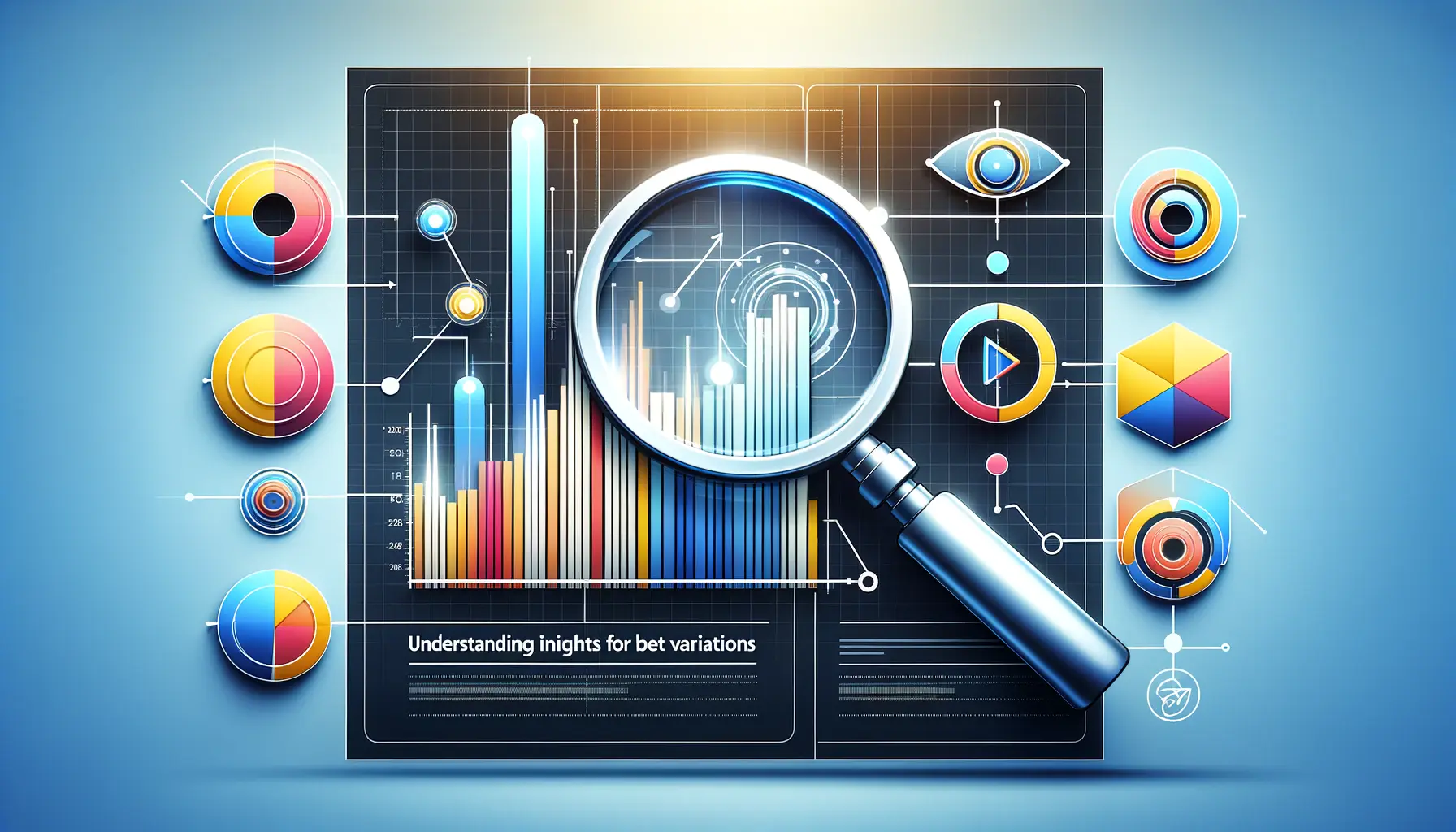Reaching the right audience is critical to the success of your display ad campaigns in digital marketing.
But how would you make sure that your ads come across to the right people, at the right time, and in the right context?
The answer lies in leveraging audience insights.
These are valuable insights that help you understand who your potential customers are, what they care about, and how to craft campaigns that resonate with them.
By making the most out of audience insights, you’ll be able to level up your ad targeting and maximize ROIReturn on Investment, a measure of the profitability of an investment..
Understanding audience insights isn’t just about data; it’s about making sense of that data to create meaningful connections with your audience.
In this article, we’ll dive into the key elements of audience insights, starting with their definition and importance in Google Ads.
Let’s explore how these insights can transform your advertising strategy.
- What Are Audience Insights in Google Ads?
- Key Metrics to Analyze for Better Targeting
- Leveraging Audience Insights for Effective Ad Targeting
- Tools and Platforms for Gathering Audience Insights
- Common Mistakes to Avoid in Utilizing Audience Insights
- Bringing It All Together: Mastering Audience Insights for Effective Ad Targeting
- Frequently Asked Questions About Audience Insights and Ad Targeting
What Are Audience Insights in Google Ads?
Audience insights in Google Ads are powerful tools you can use to collect and analyze data about your target audience.
These insights help you identify your best customers based on who they are, what they show interest in, and how they interact with your ads.
If you can understand these variables, they will enable you to refine your targeting and build campaigns that resonate with your audience.
The purpose of audience insights is to provide you with actionable data that can guide your advertising efforts.
Instead of relying on assumptions, you can base your decisions on concrete information.
This helps improve the effectiveness of your campaigns and ensures that your marketing dollars are well spent.
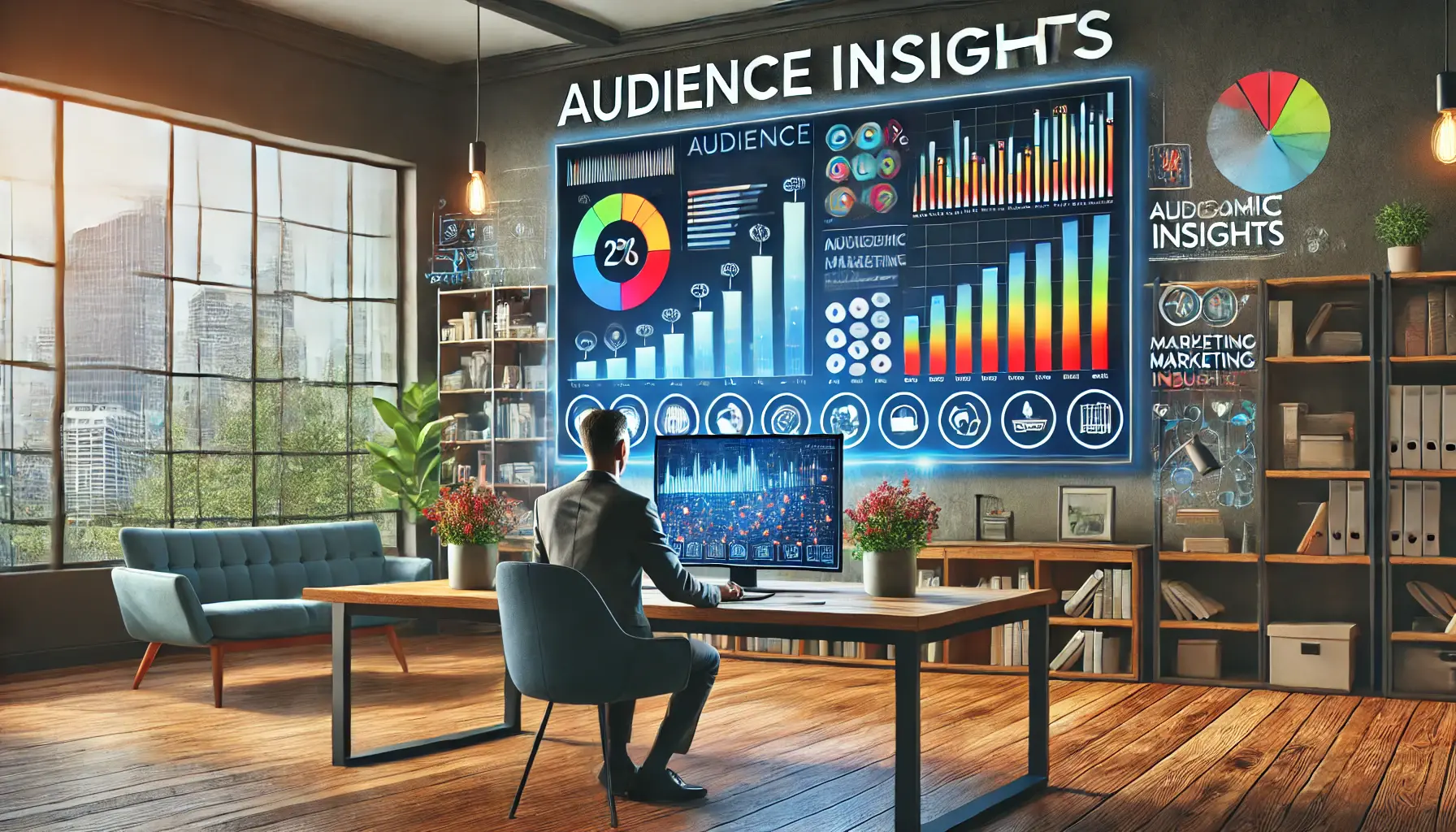
Discover how audience insights guide targeted marketing and improve ad performance.
Definition and Purpose of Audience Insights
Audience insights are pieces of data and analytics that come from various sources to understand your audience’s preferences, behaviors, and demographicsStatistical data about a population, such as age, gender, and location..
These insights are crucial, as they are used in personalizing your marketing efforts for better ad performance.
- Identify Key Demographics: Learn about your audience’s age, gender, location, and more.
- Understand Interests: Find out what topics or activities your audience engages with.
- Analyze Behavior: Follow how users interact with your ads, website, or app.
By leveraging this information, you can ensure that your ads are relevant to your audience’s needs and preferences.

Learn how audience insights refine ad targeting to improve campaign performance.
Importance of Audience Insights for Targeting
Why are audience insights so important for targeting?
The reason is that they remove the guesswork.
Instead of casting a wide net, you can work to target those who are most likely to want to see your ads.
- Increased Ad Relevance: Run ads that align with your audience’s interests and needs.
- Better ROI: Spend your ad budget on the right audience rather than wasting it.
- Higher Engagement: Increase click-through rates (CTR) and conversions by targeting interested users.
By understanding the importance of audience insights, you can create highly targeted campaigns that yield better results.

Discover how Google Ads uses audience insights to enhance targeting and optimize campaigns.
How Audience Insights Work in Google Ads
Google Ads provides robust tools to collect and analyze audience insights.
These tools allow you to:
- Access Demographic Reports: Get detailed reports on age, gender, and location.
- Analyze Interest Categories: Delve into categories that relate to user preferences.
- Create Custom Audiences: Utilize the information to create targeted audience segments.
Using these tools effectively allows you to craft and frame your campaigns and make meaningful connections with your audience.

Understand the common misconceptions that surround audience insights in digital marketing.
Common Misconceptions About Audience Insights
While audience insights are essential, several misconceptions prevail regarding their utility:
- “They’re only for large companies.” In reality, businesses of all sizes can benefit from these insights.
- “They guarantee success.” While they improve targeting, success still requires great ad creatives and strategies.
- “They invade privacy.” Audience insights are aggregated and anonymized to ensure that user privacy is not compromised.
Understanding these misconceptions will ensure that you make full use of audience insights without hesitation.
Audience insights are the key to unlocking more personalized and effective ad campaigns. They provide actionable data for identifying and engaging with your best customers.

Learn how key performance metrics drive better targeting in digital advertising.
Key Metrics to Analyze for Better Targeting
To enhance your display ad targeting, it’s essential to delve into specific audience insights metrics.
By understanding these key metrics, you can tailor your campaigns to resonate more effectively with your target audience.

Explore how demographic insights enhance your ad targeting by focusing on age, gender, and location.
Demographics: Age, Gender, and Location
Analyzing demographic data provides a foundational understanding of your audience.
Knowing the age, gender, and geographic location of your users allows you to:
- Ad Copy Customization: Create messages that can relate to targeted age groups or genders.
- Optimal Scheduling of Ads: Display ads at the timings when your target demographic is most active.
- Geotargeting: Concentrate your ads in regions where your products and services are most in demand.
In this way, you can devote more resources to targeting them if your product primarily interests young adults in urban areas.

Understand customer preferences and interests to refine your ad targeting strategies.
Interests and Affinities: Identifying Customer Preferences
Understanding the interests and affinitiesNatural preferences or interests that users exhibit toward specific categories or topics. of your audience helps in creating ads that align with their preferences.
Google Ads allows you to explore categories that resonate with your users, enabling you to:
- Develop Relevant Content: Create ads that reflect the hobbies or interests of your audience.
- Enhance Engagement: Increase the likelihood of clicks by aligning ad content with user interests.
- Reach Expansion: Discover new segments with similar interests to increase your audience base.
By leveraging these interests, you can make your ads more appealing and relevant, thus driving up your engagement rate.
Behavioral Data: Past Actions and Intent Signals
Behavioral data informs about the interaction of users with your ads and website.
This involves:
- Browsing History: Pages visited and time spent on your site.
- Purchase Behavior: Items purchased or added to the shopping cart previously.
- Search Queries: Keywords or phrases users have searched for.
Leveraging this data will, in turn, enable you to:
- Retarget Interested Users: Serve ads to users who earlier interacted with your site.
- Predict Future Behavior: Estimate the needs of users based on their past actions.
- Personalize Ad Experiences: Tailor ads to reflect individual user behavior.
For example, if a user frequently visits pages related to a specific product, you can retarget them with ads featuring that product, increasing the chances of conversion.

Tailor your ads to unique customer segments for more effective targeting and better campaign results.
Custom Segments: Tailoring Ads to Unique Groups
Creating custom audience segments allows you to group users based on specific criteria, such as:
- Website Engagement: Users who have spent a certain amount of time on your site.
- Conversion History: Those who have made a purchase or submitted a form in the past.
- Specific Interests: Users interested in certain topics or products.
By building these segments, you are able to:
- Deliver Targeted Messaging: Serve personalized ads that resonate with each group.
- Optimize Budget Allocation: Allocate more budget to segments that prove to have higher conversion potential.
- Improve Campaign Performance: Continuously assess and refine your approaches as various segments perform well or not.
Tailoring your ads to these unique groups ensures that your messaging is relevant and compelling, leading to better engagement and conversion rates.
- Demographics: Understand who your audience is.
- Interests: Learn what excites and engages your audience.
- Behavioral Data: Use past actions to predict future needs.

Leverage audience insights to create more targeted and effective ad campaigns.
Leveraging Audience Insights for Effective Ad Targeting
Utilizing audience insights is pivotal in refining your ad targeting strategies.
By comprehending your audience’s demographics, interests, and behaviors, you can craft campaigns that resonate more deeply, leading to enhanced engagement and conversions.

Create detailed buyer personas to tailor marketing strategies to specific customer segments.
Creating Detailed Buyer Personas
Developing comprehensive buyer personas involves:
- Demographic Analysis: Assessing age, gender, income, education, and occupation.
- Psychographic Profiling: Understanding interests, values, lifestyles, and attitudes.
- Behavioral Insights: Examining purchasing habits, brand interactions, and online activities.
By integrating these elements, you can create detailed profiles that guide your marketing strategies, ensuring your ads align with the specific needs and preferences of your target audience.

Segment your marketing campaigns to reach the right audience with personalized messaging.
Implementing Segmented Marketing Campaigns
Segmented marketing involves dividing your audience into distinct groups based on shared characteristics.
This approach allows for:
- Personalized Messaging: Craft customized messages that address the specific needs of each segment.
- Optimized Resource Allocation: Focus your marketing efforts on segments with the highest potential for conversion.
- Enhanced Engagement: Increase the relevance and resonance of your ads, leading to higher engagement rates.
For instance, one could have different campaigns targeting first-time buyers and repeat customers, each with messaging and offers tailored to their journey stages.

Expand your reach by leveraging lookalike audiences to grow your customer base.
Utilizing Lookalike Audiences for Expansion
Lookalike audiences are groups of potential customers who share similarities with your existing audience.
Leveraging these audiences enables you to:
- Broaden Reach: Connect with new users likely to be interested in your products or services.
- Maintain Relevance: Ensure new prospects align with the characteristics of your best customers.
- Improve Conversion Rates: Target individuals more predisposed to engage with your brand.
By analyzing your current customer base, you can identify key traits and behaviors to inform the creation of lookalike audiencesGroups of users who share similar characteristics to an existing audience, used for expanding reach in digital marketing., facilitating effective market expansion.

Monitor and optimize your ad campaigns regularly to ensure maximum performance.
Continuous Monitoring and Optimization
Effective ad targeting is an ongoing process that requires:
- Regular Performance Analysis: Evaluate key metrics such as click-through rates, conversion rates, and return on ad spend.
- Audience Feedback Integration: Gather and incorporate feedback to refine targeting strategies.
- Adaptive Strategy Adjustment: Modify campaigns based on performance data and emerging audience trends.
By continually monitoring and optimizing your campaigns, you can adapt your ad targeting to changing audience behaviors and preferences, ensuring continued effectiveness and efficiency.
Integrate audience insights into buyer personas and segmented campaigns to enhance targeting. Lookalike audiences and continuous optimization are key to scaling effectively.

Leverage various tools and platforms to collect valuable audience insights and refine your digital marketing strategies.
Tools and Platforms for Gathering Audience Insights
To effectively harness audience insights for your ad targeting strategies, it’s essential to utilize robust tools and platforms designed for data collection and analysis.
These resources provide valuable information about your audience’s demographics, behaviors, and preferences, enabling you to craft more targeted and effective campaigns.

Use Google Analytics to track website performance and gain valuable insights into audience behavior.
Google Analytics
Google Analytics is a powerful tool that provides a significant level of detail about the traffic and usage of your website.
By implementing Google Analytics on your website, you can:
- Track User Behavior: Understand how users interact with your site by tracking pages they visit, time spent, and navigation paths.
- Analyze Demographics: Gain insights into the age, gender, and location of your audience.
- Analyze Traffic Sources: Determine where your visitors are coming from, such as organic search, social media, or referral sites.
These insights enable you to optimize your ad campaigns to better meet the needs and preferences of your targeted audience.

Efficiently manage and target your audience with Google Ads Audience Manager for optimized ad campaigns.
Google Ads Audience Manager
Google Ads Audience Manager is a Google Ads feature that lets you create and manage audience segments for your campaigns.
With Audience Manager, you can:
- Create Custom Audiences: Segment users by behavior, demographics, and interests.
- Remarketing Lists: Target users who have already visited your website or mobile application.
- Audience Insights: Gain a deeper understanding of the characteristics and behaviors of your audience.
By leveraging these features, you can enhance your ad targeting and improve campaign performance.

Leverage social media analytics tools to refine your digital marketing strategies and optimize audience engagement.
Social Media Analytics Tools
Social media platforms come with built-in analytics tools, which provide critical data about your audience.
Examples include:
- Facebook Insights: Measures user engagement, demographics, and post performance.
- Twitter Analytics: Provides insights into tweet performance, follower demographics, and engagement metrics.
- LinkedIn Analytics: Covers follower demographics, engagement, and content performance.
Utilizing these tools helps you understand how your audience interacts with your content on social media, allowing you to refine your ad strategies accordingly.

Manage and analyze customer relationships effectively using CRM systems to enhance engagement and business strategies.
Customer Relationship Management (CRM) Systems
CRM systems are essential for managing and analyzing customer interactions and data throughout the customer lifecycle.
By integrating a CRMCustomer Relationship Management, a system for managing interactions with current and potential customers. system, you can:
- Track Customer Interactions: Monitor communications and engagements with your brand.
- Analyze Purchase History: Understand buying patterns and preferences.
- Segment Customers: Group customers based on behaviors, demographics, or purchase history.
These insights enable you to personalize your ad campaigns and improve customer retention.

Utilize surveys and feedback tools to gather valuable customer insights and improve marketing strategies.
Surveys and Feedback Tools
Direct feedback from your audience provides invaluable insights into their preferences and experiences.
Tools like SurveyMonkey or Google Forms allow you to:
- Gather Customer Feedback: Collect opinions on products, services, or content.
- Conduct Market Research: Understand market needs and trends.
- Assess Customer Satisfaction: Measure satisfaction levels and identify areas for improvement.
Incorporating this feedback into your strategies ensures that your ad campaigns meet the expectations and needs of your audience.
By leveraging these tools and platforms efficiently, you can uncover deep and comprehensive audience insights to inform and improve your ad targeting strategies for more successful and impactful campaigns.
- Google Analytics: Understand user behavior and demographics.
- Google Ads Audience Manager: Create and manage custom audiences.
- CRM Systems: Track and analyze customer interactions and data.

Avoid common mistakes in utilizing audience insights to ensure more effective marketing strategies.
Common Mistakes to Avoid in Utilizing Audience Insights
Effectively leveraging audience insights is crucial for optimizing your ad targeting strategies.
However, several common pitfalls can hinder your success.
By being aware of these mistakes, you can refine your approach and achieve better results.

Ensure high-quality, integrated data for effective marketing decisions by avoiding data quality issues.
Overlooking Data Quality and Integration
Relying on inaccurate or incomplete data can lead to flawed audience insights, resulting in ineffective targeting.
To avoid this:
- Ensure Data Accuracy: Regularly audit your data sources to maintain high-quality information.
- Integrate Data Sources: Combine data from various platforms to gain a comprehensive view of your audience.
By maintaining data integrity, you can make informed decisions that enhance your ad targeting strategies.

Avoid the mistake of neglecting audience segmentation for better-targeted marketing campaigns.
Neglecting Audience Segmentation
Failing to segment your audience can lead to generic messaging that doesn’t resonate with specific groups.
To prevent this:
- Identify Key Segments: Segment your audience based on demographics, behaviors, and interests.
- Tailor Messaging: Create personalized content that speaks directly to each segment’s needs and preferences.
Effective segmentation enables more relevant and engaging ad campaigns.

Leverage behavioral data to enhance your marketing efforts and improve targeting strategies.
Neglecting Behavioral Data
Neglecting how users interact with your brand can lead to missed opportunities for targeted advertising.
To take advantage of behavioral data:
- Analyze User Interactions: Monitor website visits, content engagement, and purchase history.
- Implement Retargeting Strategies: Serve ads to users based on their previous interactions with your brand.
By applying behavioral insights, you can create more targeted and impactful ads.
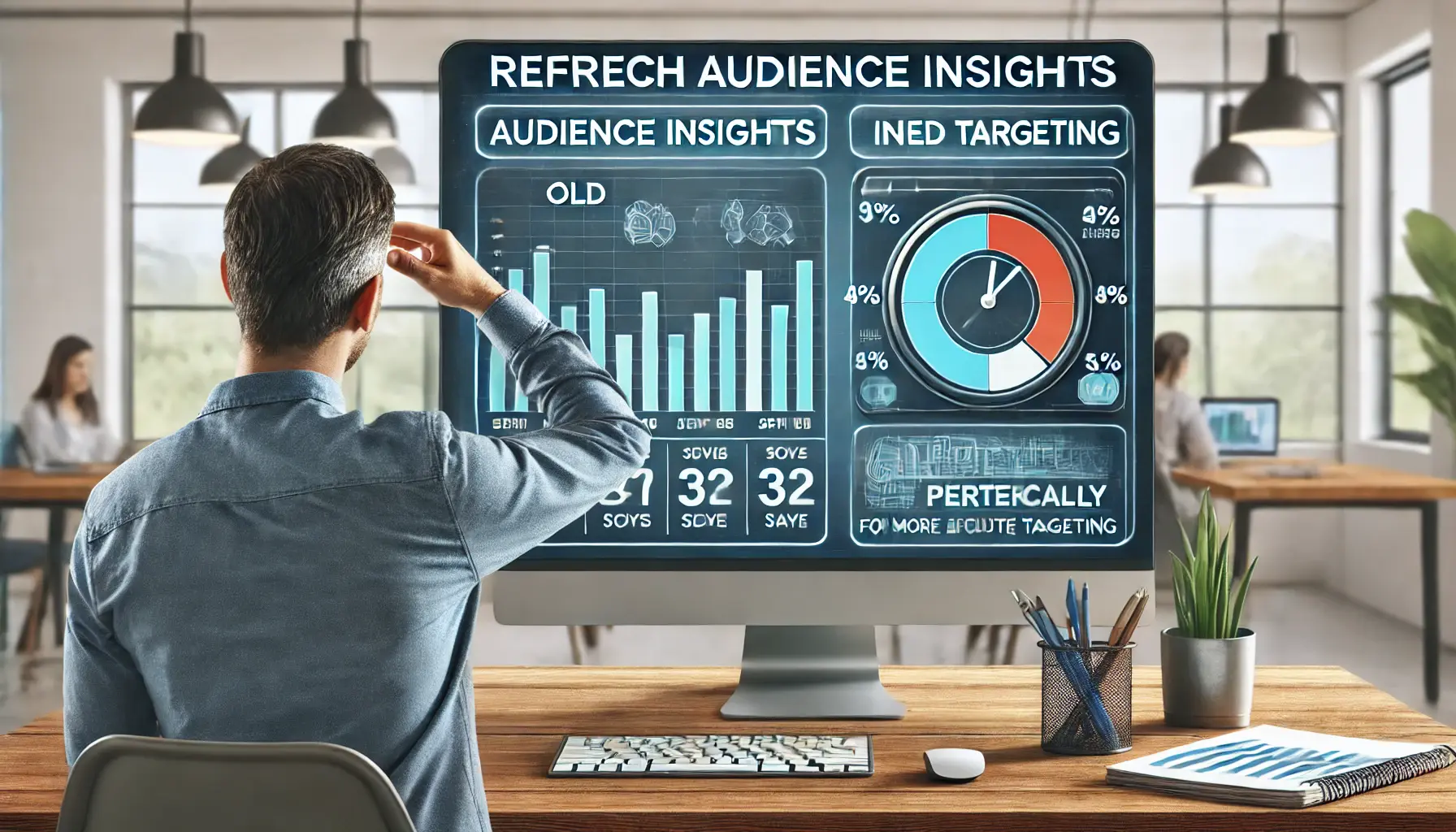
Refresh audience insights regularly to ensure more accurate and effective marketing decisions.
Not Refreshing Audience Insights Periodically
Audience interests and behaviors change over time.
If you only use old insights, you may target the wrong audience.
To keep up-to-date:
- Conduct Regular Analysis: Periodically review and update your audience data.
- Adapt Strategies: Modify your ad campaigns to align with the latest audience trends and behaviors.
Keeping your audience insights up-to-date ensures your ad targeting remains effective and relevant.

Simplify audience segments to create more effective and manageable marketing strategies.
Overcomplicating Audience Segments
Creating overly complex audience segments can lead to analysis paralysis and hinder campaign execution.
To simplify:
- Concentrate on Key Attributes: Pinpoint the most influential characteristics defining your audience members.
- Test and Refine: Begin with larger segments and narrow them down based on performance insights.
Streamlining the process in this way will make your segmentation much more powerful.
Avoiding these common mistakes will let you better apply audience insights to refine your ad targeting and yield high levels of engagement and conversion rates.
- Don’t neglect data accuracy and integration.
- Update insights periodically to stay relevant.
- Avoid overcomplicating audience segmentation.

Master the integration of audience insights for a more effective and targeted ad campaign strategy.
Bringing It All Together: Mastering Audience Insights for Effective Ad Targeting
Throughout this article, we’ve explored the power and potential of leveraging audience insights to enhance display ad targeting.
By understanding the key metrics, tools, and strategies discussed, you can create campaigns that are both effective and impactful.
This comprehensive approach not only improves your ROI but also strengthens your connection with your audience.
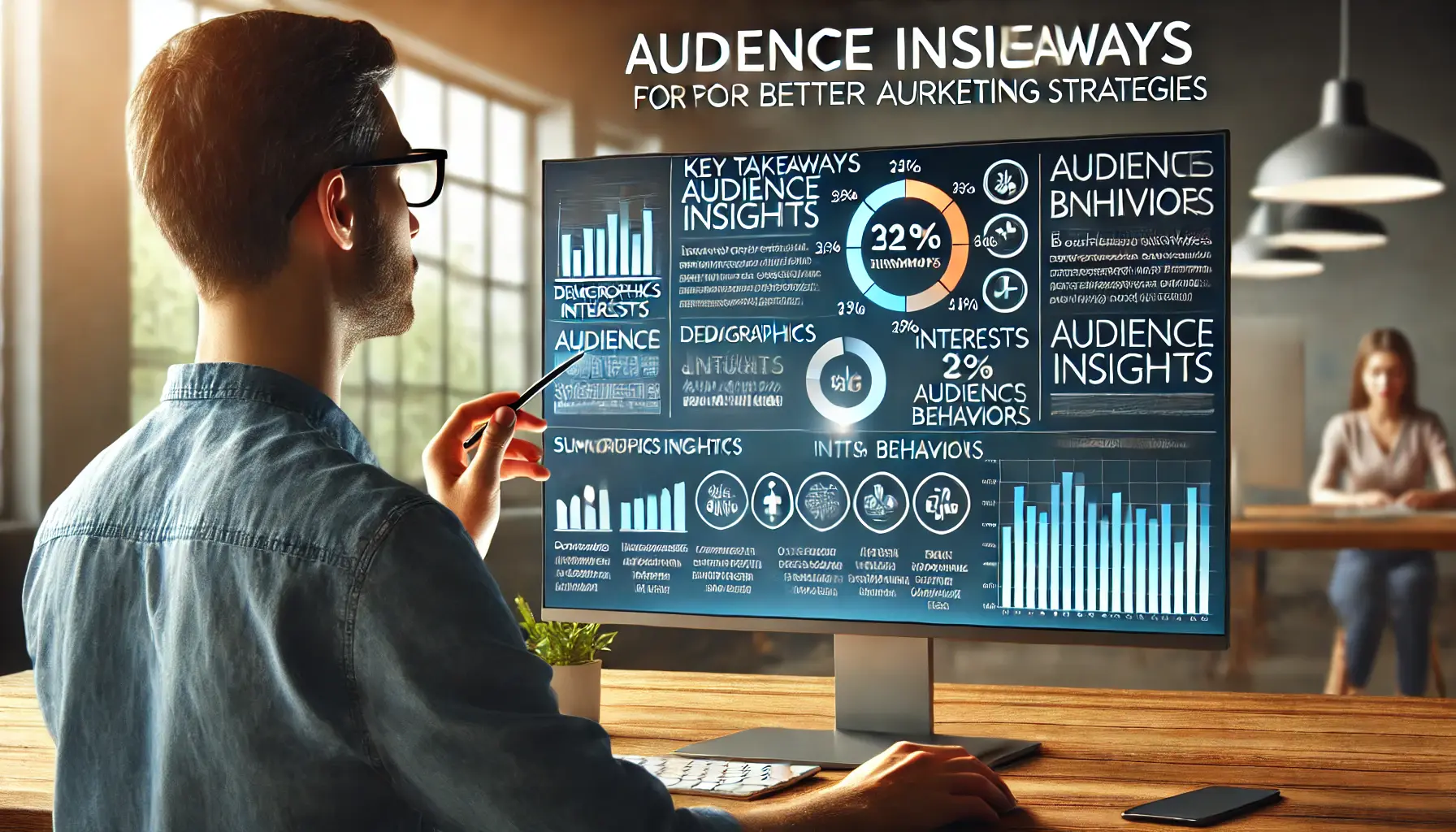
Review key takeaways from audience insights to refine your marketing strategies and enhance targeting.
Key Takeaways on Audience Insights
To fully harness the power of audience insights, the core aspects to focus on include:
- Understand Your Audience: Delve deep into demographics, interests, and behaviors for a clear profile of who your audience is.
- Use Robust Tools: Leverage platforms such as Google Analytics, Google Ads Audience Manager, and social media analytics tools for gathering data.
- Segment Effectively: Group your audience into meaningful categories to ensure personalized messaging and enhanced engagement.
- Adapt to Change: Regularly update your insights to reflect evolving audience preferences and market trends.
- Avoid Common Mistakes: Maintain data quality, avoid overcomplicating segments, and stay proactive in analyzing audience behavior.
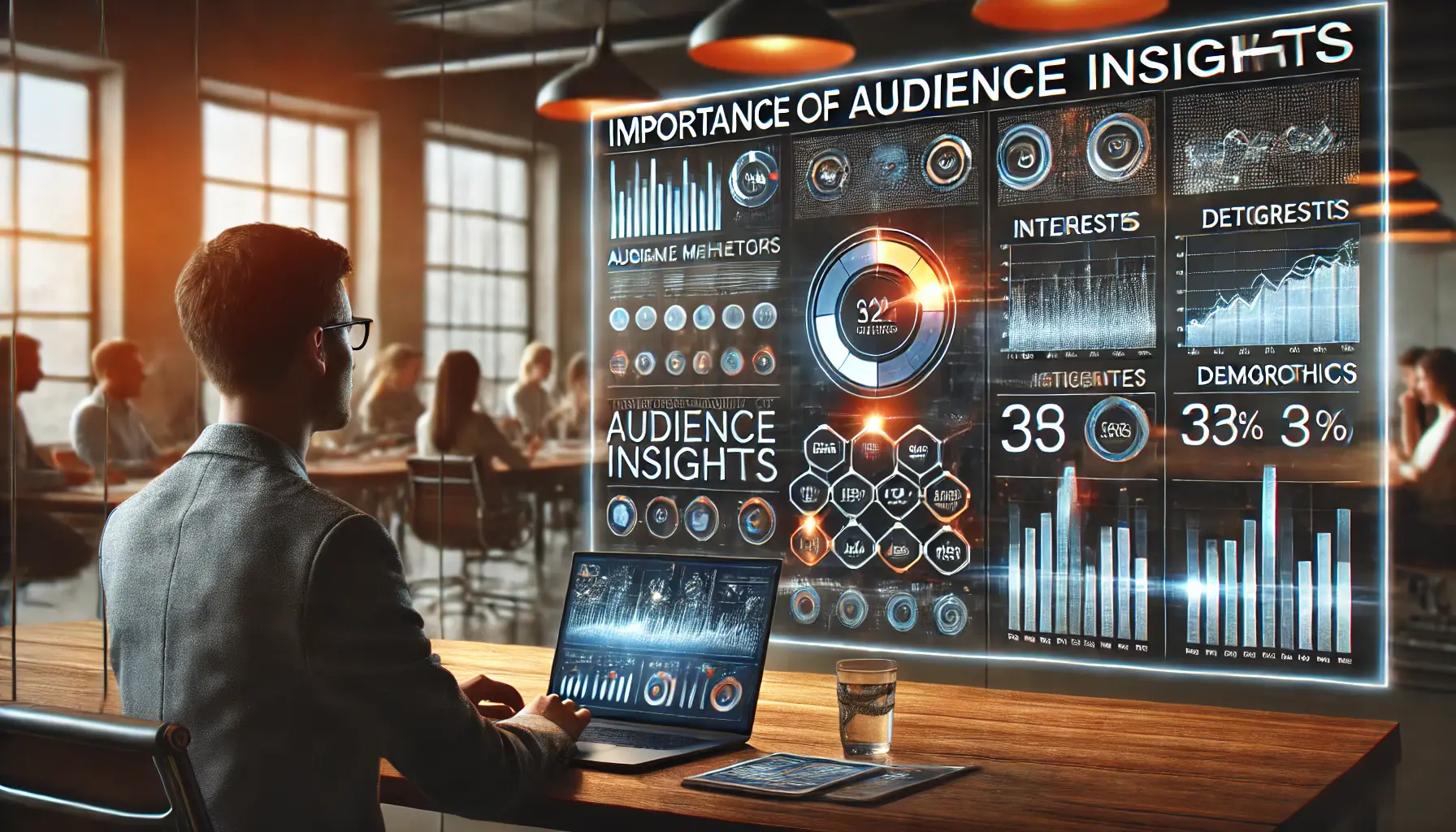
Understand why audience insights are essential for refining marketing strategies and improving campaign performance.
Why Audience Insights Matter
Audience insights are more than just information; they provide the bedrock on which successful advertising campaigns are built.
Tailoring your ads to these insights ensures your message will reach the right people at the right time and in exactly the right way.
Moreover, audience insights help you navigate challenges in a competitive digital landscape.
They empower you to make informed decisions, allocate resources efficiently, and maintain relevance in a rapidly changing market.

Plan and refine your marketing strategies by focusing on the next steps for optimization.
Next Steps to Optimize Your Campaigns
With the strategies and tools discussed in this article, you’re now equipped to take your ad targeting to the next level.
Here’s how you can get started:
- Audit Your Current Data: Assess the accuracy and relevance of your existing audience insights.
- Set Clear Goals: Establish what you want to achieve with ad campaigns
- Implement and Test: Apply the strategies outlined here and monitor performance to identify what works best for your audience.
- Refine and Repeat: Continuously update insights, refine strategies, and adapt flexibly to new trends and behaviors.
By following these steps, you will unlock the true potential of audience insights for measurable success in advertising.
In the end, audience insights aren’t just about perfecting your ad targeting; they’re about forging enduring bonds with your audience and driving meaningful results for your business.
Audience insights provide the foundation for successful campaigns. Regular updates, robust tools, and strategic segmentation ensure sustained ad effectiveness and audience engagement.
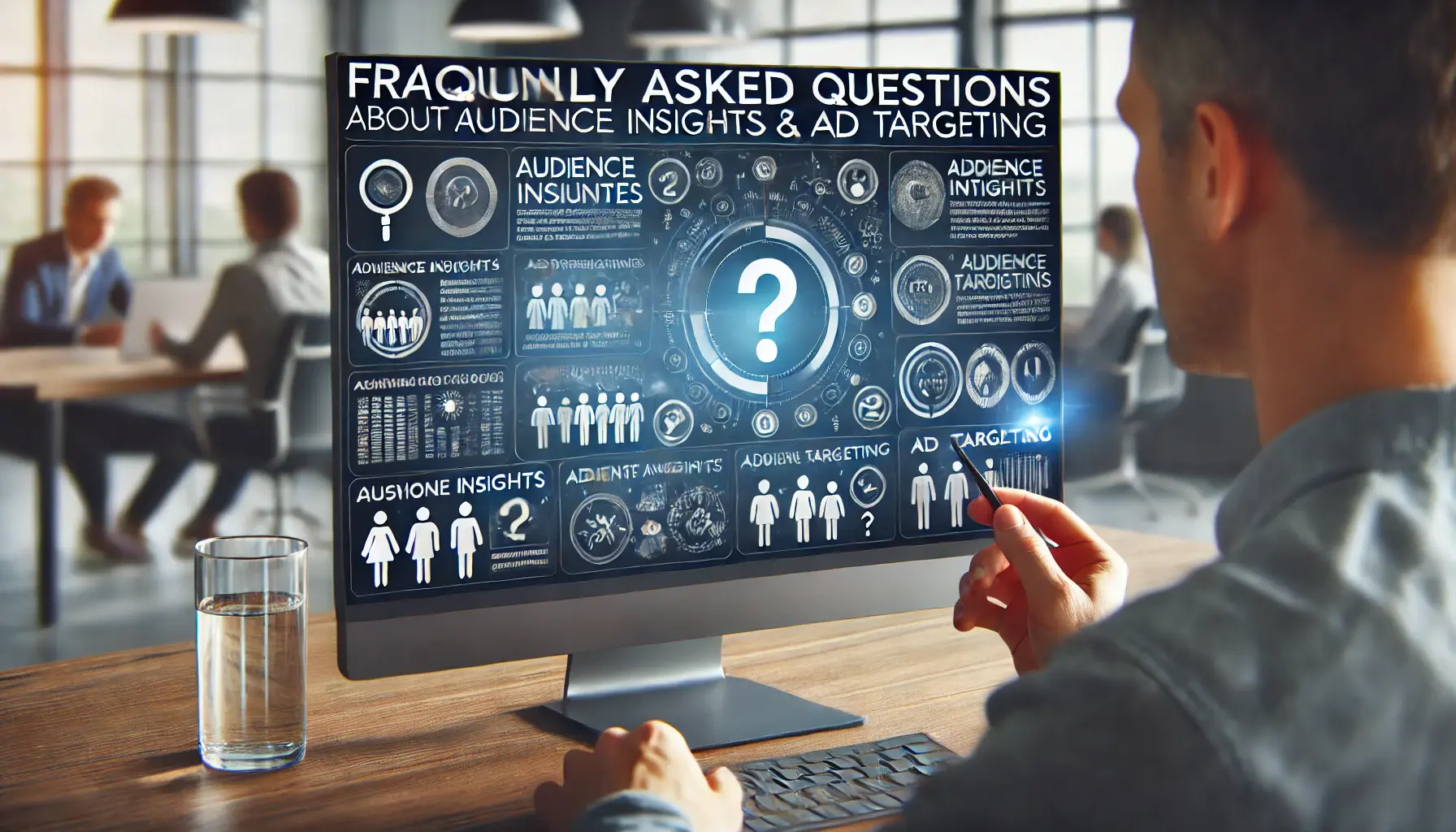
Address frequently asked questions to refine your audience insights and ad targeting strategies.
Your campaigns can be managed by an agency specialized in Google Ads, check out our service page.
Frequently Asked Questions About Audience Insights and Ad Targeting
Understanding audience insights is crucial for effective ad targeting.
Below are common questions and concise answers to help you navigate this essential aspect of digital marketing.
Insights about your target audience represent data analysis that carves out the demographics, interests, and behaviors of your target audience to serve ads to them more effectively.
They allow marketers to tailor ads to specific audience segments, increasing relevance and engagement, which leads to higher conversion rates.
Tools like Google Analytics, Facebook Audience Insights, and CRM systems offer valuable data on audience demographics and behaviors.
Regular updates are essential; reviewing and refreshing insights quarterly helps maintain accurate targeting as audience behaviors evolve.
Absolutely.
Leveraging audience insights enables small businesses to allocate resources efficiently and create targeted campaigns that resonate with their specific audience.
Common errors include relying on outdated data, neglecting segmentation, and overcomplicating audience categories, which can lead to ineffective targeting.
Segment your audience based on key factors like demographics, interests, and behaviors to create personalized and relevant ad content.
Behavioral data provides insights into user interactions, helping to predict future actions and tailor ads to individual preferences.
Track key performance indicators such as click-through rates, conversion rates, and return on ad spend to evaluate whether your targeting strategies are effective.




